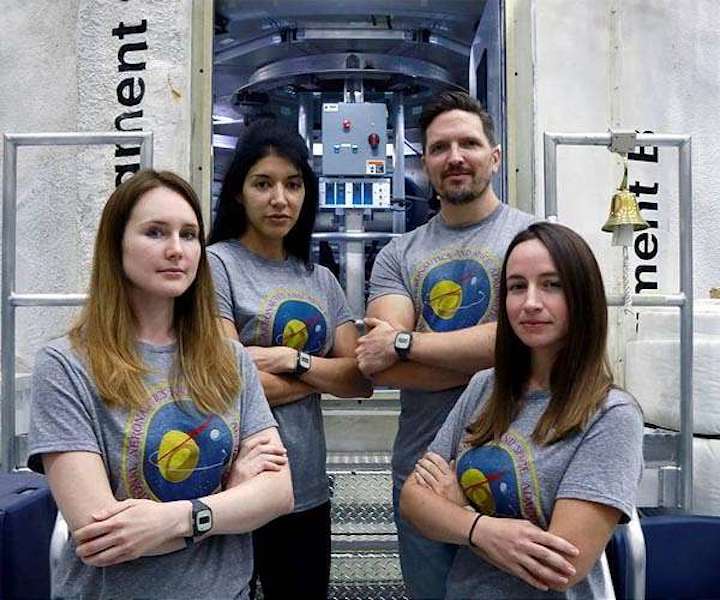1.10.2021

The new crew for the upcoming mission of NASA's Human Exploration Research Analog, or HERA, stands in front of the habitat that will be their home for 45 days. From left to right: Lauren Cornell, Monique Garcia, Christopher Roberts, and Madelyne Willis.
Have you ever wondered what it would be like to head deep into space, all the way to Mars? Through a simulated journey, four volunteer research subjects will soon have a chance to find out.
Beginning Oct. 1, 2021, four people will live and work for 45 days inside a unique, ground-based habitat at NASA's Johnson Space Center in Houston. Designed to serve as an analog for isolation, confinement, and remote conditions in exploration scenarios, this small habitat is called the Human Exploration Research Analog, or HERA.
HERA will house crew members who will simulate the long trek to Mars' moon Phobos. Similar to other HERA missions, once the habitat's doors close, the crew will need to stay inside for 45 days until the mission ends on Nov. 15.
As the simulated journey takes crew members closer to Phobos, those inside will experience increasing delays in communicating with the outside world. When the simulation successfully brings the crew to Phobos, this delay will last up to five minutes each way. Such delays will force the crew - and those coordinating their journey - to practice communicating in ways that minimize impacts to mission operations, and allow the crew sufficient autonomy to accomplish the mission.
The upcoming mission signals the start of HERA's Campaign 6. Three additional missions will follow as part of the campaign, with the final egress set for Sept. 12, 2022.
NASA's Human Research Program will perform 15 total studies throughout the missions, with seven returning and eight new investigations. The data collected as part of these missions will continue to help prepare humans for Artemis exploration missions to the Moon, trips to the planned lunar Gateway, and long-duration missions to Mars.
Four of the candidates below
Quelle: SD
